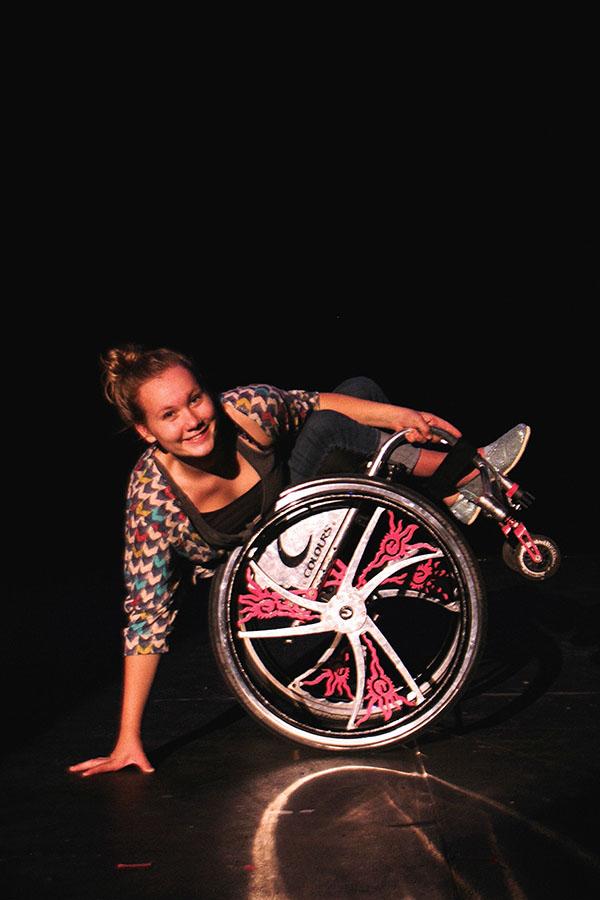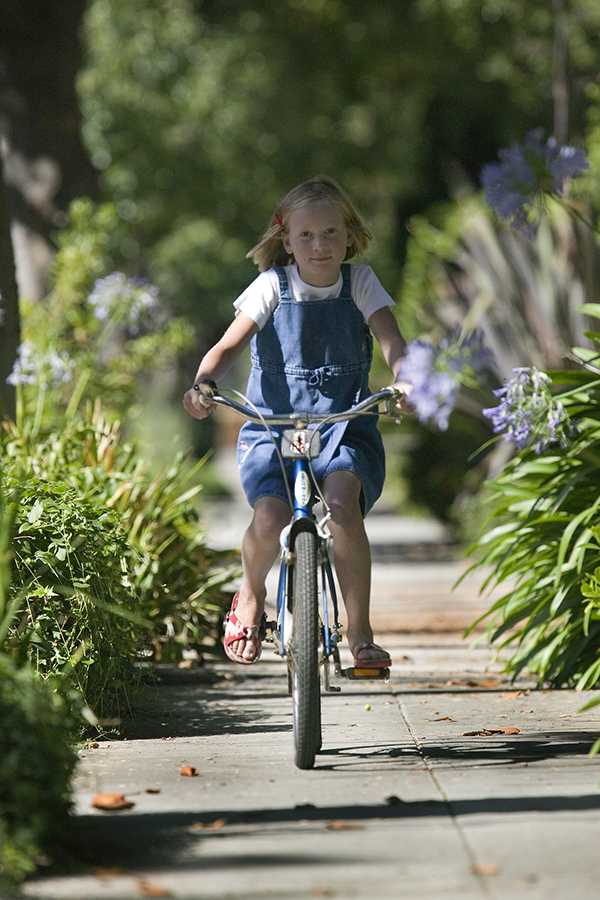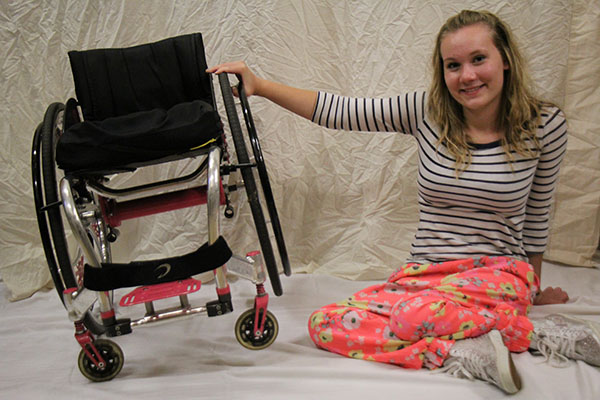
Kariel Young does not know the next time her legs will move. It could be a week or a few days until her muscles contract again. When they do, it feels to her like they are working, even though she has no control of her lower body — and never will. Sometimes, these contractions send shocks down her back and numb her right arm. Or they go from her feet all the way up to her shoulders and make her back straighten up completely. Then, her legs turn back into spaghetti noodles.
This morning begins as most do, with Young wrestling herself out of her patterned pastel sheets, reaching for her toes, and flexing them toward the ceiling. If she doesn’t stretch out her legs, her knees will remain drawn up and her ankles will tighten to the point where she won’t even be able to wear shoes. To her, the muscle stimulation of stretching simulates walking.
Young then struggles to put on the smokey blue sweater and leggings she picked out the previous night, before scooting herself to the edge of the bed and shifting her body onto the black cushion of her pink and black wheelchair.
The clock reads 7:30 a.m. as she wheels out the back door of her grandparents’ house down two wooden ramps, passing through the side yard gate to her grandmother’s Honda Accord. The mile-long car ride ends as the Palo Alto High School tower building comes into view. She pushes her chair up the cement slope, through the main Quad to her locker, eventually rolling into her United States History classroom well before the bell rings.
It wasn’t always this way.
Seven years earlier in her home state of Alaska, Young and her step-brother were home alone in their five-wheeled camper van. As Young watched a movie, her step-brother fiddled with a gun behind her. Though she repeatedly asked him to put it away, he told her the gun was not loaded. She continued watching the movie until the final credits began rolling down the screen, when she heard the sound of the gun’s metallic explosion.
The bullet severed her spinal cord at the T-2 vertebrae, paralyzing her from the chest down. While the incident may have been the darkest moment of her life, it also launched a life of vitality and activism.
Here and Now
Now 16-years-old, Young, who arrived at Paly as a junior this year, has risen above her paralysis and used her disability as a platform to advocate through the non-profit Walk and Roll Foundation, where she was recently appointed as the organization’s inaugural ambassador. Each day, she strives to use her unique perspective as a means to raise awareness for those with spinal cord injuries and other disabilities.
As a result, Young exemplifies the fighting spirit, courageously confronting adversity every day. The smiling Palo Alto High School junior bears slim resemblance to the dejected little girl who left the hospital seven years ago.
“I took [paralysis] terribly hard as a child,” Young says. “It mentally destroyed me for a year, and I asked ‘Why me?’ constantly.”
Young’s paternal grandparents noticed the drastic change in their granddaughter when she visited them following the accident.
“She held everything close to her chest,” says Young’s grandma, Mary Ann Young. “She would often come to visit and we would know that something was not right. But she would never let on. The stress and the strain she was under was insurmountable, and it shut her off.”
Before the incident, Young took full advantage of the activities her home in Alaska had to offer. She rode dirt bikes and snow machines, skied, hiked, played soccer, ran and rollerbladed. But when Young returned from the hospital to her two-story home, she realized that she couldn’t get up to the second floor without relying on someone to carry her up and down the stairs. Her roller blades, ice skates, skateboard, motocross boots and bicycle were packed up on a shelf in the garage, out of reach and out of sight.

“[Sports] seemed like something I had lost and could never get back,” Young says.
On the days she struggled to cope with her physical disability, she says she would have given away everything she owned to simply wiggle her toes.
In the years following the accident, Young has risen above even her own expectations and tried sports such as paddle boarding, snorkeling, kayaking, and 5k races. She aspires to become a professional dancer, singer and actress, despite the apprehensive looks she may receive.
“When people say, ‘That’s too hard, why would you even try?’ that fires me up, that pisses me off,” Young says. “I will try any and everything even if it takes me three and a half hours.”
Though Young eventually found ways to get over the physical obstacles of paralysis, different challenges arose as she entered her middle school years. It seemed as if there was nobody at school she could relate to. Others would often try to commiserate, telling her they knew how she felt because they had been on crutches or broken a leg, yet these attempts at conciliation only left her more dejected.
“There’s no real understanding because they’ve never been where you are and probably won’t be where you are,” Young says. “No matter how hard you try to explain [being paralyzed], there’s really no real understanding of how hard it is.”
High School Life
After receiving homeschooling through ninth and tenth grade, Young remembers feeling excited to embark on her last two years of high school at Palo Alto High School. The start of her junior year marked not only the difficult return to public school, but the transition from Alaska to her grandparents’ house in Palo Alto. Though Young remains optimistic, she has already had several unpleasant encounters with inconsiderate people.
During one of the first weeks of school, Young waited for seven minutes to use the elevator of the new math and history building. A group of boys had prevented it from going up to the second floor. This irritated her because she says the able-bodied boys had no valid reason to use the elevator instead of the stairs.
Young asked the boys to use the stairs because she needed the elevator, but unfortunately, the situation replayed itself a few days later. This time, however, Young didn’t keep her composure quite as well.
“‘I don’t have the ability to walk up and down stairs,’” Young recounts telling the boys. “‘I would give anything in the world to be able to do that. It’s not fair for me to have to wait.’”
Situations like these have served as motivation for Young. Despite the annoyed responses she might get when she tries to stick up for herself, she always takes the opportunity to educate non-disabled people about the respectful way to treat those who are disabled.
“I make it a point to stop and talk to them in a nice way and use me as an example for a lesson on life,” Young says. “Maybe it will click with them when they come in contact with another person like myself. It’s not going to be foreign, and they might know a little bit more about how to treat someone [using a wheelchair].”
Handling the Questions
Paralysis brings both physical challenges and challenges to Young’s self-esteem.
“Because I’m in a wheelchair, people think I’m mentally challenged because I am physically challenged,” Young says. “That’s not true at all.”
Sometimes, Young feels that the misconception that she has a mental disability has led her to overwhelm herself academically.
For instance, she originally enrolled in seven classes for junior year, but limited her schedule to four classes after experiencing her first hectic week of school.
“I struggle with having to prove myself,” Young says. “I was overloading myself to be like everyone else.”
Throughout her seven years in a wheelchair, Young has heard an entire spectrum of misinformed comments directed toward people with different abilities. When asked personal questions, Young tries to answer honestly.
“I actually encourage people to ask [about the wheelchair] so they can get the right answer rather than being unsure and making up the answer in their head,” Young says.
Spreading the Word

With the abundance of misconceptions regarding paralysis, Young says she feels the need to educate her peers as well as others she encounters. As Walk and Roll’s ambassador, she educates people about Spinal Cord Injury and its effects.
Members of the foundation travel around California and participate in Rally for Reality presentations at schools to help inform people on the dangers of distracted driving and how it can lead to SCI. The Walk and Roll Foundation members share their personal stories and speak about their experiences at events.
Young hopes to coordinate a Rally for Reality at Paly in the upcoming months after she receives approval from the school administration; she is confident that the presentation will be well-received.
“I have another year at Paly before I graduate, and it’s just really fun to be able to do things with schools,” Young says. “Once you captivate the crowd, they start listening because people have a stereotypical view of people in [wheel]chairs.”
On a more personal level, Young wants the Paly community to learn to embrace others with different abilities who might attend the school in future years.
“What if there is a little girl who comes in as a freshman and she’s sitting in a chair and she’s getting the same [inconsiderate treatment] as I’m getting?” Young says. “What if she doesn’t have a good support system? All of that matters. I want to make many changes this year and next year to help anyone who comes to Paly with different abilities.”
Role Models
Young understands firsthand the importance of having a loyal support system. Through the Walk and Roll Foundation, she has met other girls who are paralyzed. Not only have these young women become her support group, but they are also her friends who she can call anytime for advice or a listening ear.
“I have so many friends in [wheel]chairs, and it helps me so much that they’re all older than me,” Young says. “They went through high school. They know what I’ve been through. At the end of day when I’m absolutely torn down to nothing, I can call 10 people and get a different piece of advice from each person to help build me up for the next day.”
Young especially relates to Ali Stroker, a member of the Walk and Roll dance team and an actress and singer whose performance career included a role on the fifth season of “Glee.” Likewise, Stroker views Young as a younger version of herself.
“When I first met [Young], I saw a lot of myself in her,” Stroker says. “We have this inside joke that [she] is my mini me. She has such a sense of humor; she is such a bright light. I feel like I was very similar to her when I was younger. She’s really opened up to me.”
Stroker and Young have the same spinal cord injury, so Young has learned how to perform everyday tasks such as getting from the floor to her wheelchair without assistance. Young also aims to become a professional actress, singer and dancer like Stroker and looks towards her for advice on how the industry treats paralyzed actors.
“In the [entertainment] industry, they would rather hire able-bodied people,” Young says. “The only way to really do you want is to be willing to put all of yourself out there.”
Older girls like Stroker have imparted an important lesson of determination on Young. According to her, dozens of other paralyzed girls look up to her as a role model.
“I look at the little girls that look up to me and it’s so powerful to think that some little kid who I’ve never even met looks at pictures and said, ‘I want to look just like her. Or, I want to roll fast just like her,’” Young says. “And that’s one of the reasons that I keep going all the time, because I want to be the person that I needed.”
Effects of Spinal Cord Injury
Paralysis is not the only effect of spinal cord injury. Hover over the image to learn about other ways SCI can impact a person’s body.




